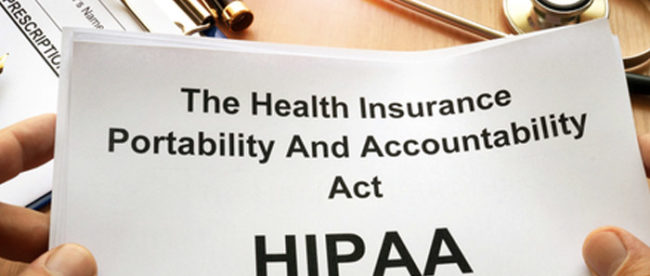Pacific Prime Things To Know Before You Buy
Pacific Prime Things To Know Before You Buy
Blog Article
Indicators on Pacific Prime You Need To Know
Table of ContentsSee This Report on Pacific PrimeSome Known Factual Statements About Pacific Prime Getting The Pacific Prime To WorkAn Unbiased View of Pacific PrimeThe 7-Second Trick For Pacific Prime

This is due to the fact that the information were collected for a duration of strong financial efficiency. Of the approximated 42 million people that were without insurance, almost about 420,000 (about 1 percent) were under 65 years old, the age at which most Americans end up being qualified for Medicare; 32 million were adults between ages 18 and 65, around 19 percent of all adults in this age; and 10 million were kids under 18 years of age, about 13.9 percent of all youngsters (Mills, 2000).
These estimates of the number of individuals without insurance are created from the annual March Supplement to the Current Populace Study (CPS), conducted by the Census Bureau. Unless or else kept in mind, national price quotes of people without medical insurance and percentages of the populace with various sort of coverage are based on the CPS, one of the most extensively made use of source of estimates of insurance coverage and uninsurance prices.
The 25-Second Trick For Pacific Prime

Still, the CPS is particularly helpful since it creates annual estimates relatively quickly, reporting the previous year's insurance policy protection approximates each September, and since it is the basis for a consistent collection of quotes for greater than twenty years, allowing for evaluation of fads in coverage in time. For these reasons, along with the comprehensive use of the CPS in other researches of insurance protection that exist in this report, we depend on CPS estimates, with constraints noted.

The estimate of the variety of uninsured individuals increases when a population's insurance policy condition is tracked for several years. Over a three-year period starting early in 1993, 72 million people, 29 percent of the U.S. https://www.domestika.org/en/pacificpr1me. populace, were without coverage for at the very least one month. Within a single year (1994 ), 53 million individuals experienced at the very least a month without coverage (Bennefield, 1998a)
Six out of every ten uninsured grownups are themselves used. Working does boost the probability that one and one's family participants will have insurance policy, it is not an assurance. Also members of family members with two permanent wage earners have nearly a one-in-ten possibility of being without insurance (9.1 percent uninsured price) (Hoffman and Pohl, 2000).
Some Known Details About Pacific Prime
New published here immigrants make up a substantial percentage of individuals without health and wellness insurance coverage. One evaluation has actually connected a significant portion of the recent development in the dimension of the united state without insurance populace to immigrants that arrived in the country between 1994 and 1998 (Camarota and Edwards, 2000). Recent immigrants (those that came to the United States within the past four years) do have a high rate of being without insurance (46 percent), however they and their kids represent simply 6 percent of those without insurance policy across the country (Holahan et al., 2001).
The connection between health and wellness insurance coverage and access to care is well developed, as recorded later on in this phase. Although the partnership between health insurance policy and health outcomes is neither direct nor simple, a comprehensive clinical and health solutions study literary works web links health and wellness insurance policy coverage to improved access to care, much better high quality, and improved personal and population wellness standing.
Levels of evaluation for analyzing the results of uninsurance. It concentrates specifically on those without any type of health insurance coverage for any size of time.
Things about Pacific Prime
The troubles dealt with by the underinsured remain in some respects comparable to those dealt with by the without insurance, although they are generally less severe. global health insurance. Uninsurance and underinsurance, however, entail clearly different policy issues, and the strategies for resolving them might differ. Throughout this research and the 5 records to comply with, the primary focus is on individuals without medical insurance and thus no assistance in spending for wellness treatment past what is offered with charity and safeguard establishments
Health insurance is an effective aspect impacting receipt of care because both people and medical professionals reply to the out-of-pocket rate of solutions - https://peatix.com/user/21635503/view. Wellness insurance policy, nonetheless, is neither needed neither adequate to get to medical services. The independent and straight impact of health insurance coverage on accessibility to health and wellness services is well developed.
Others will certainly acquire the healthcare they need also without health and wellness insurance coverage, by paying for it out of pocket or seeking it from suppliers who use care free or at extremely subsidized prices. For still others, medical insurance alone does not guarantee invoice of care due to the fact that of other nonfinancial barriers, such as an absence of wellness care carriers in their neighborhood, minimal access to transportation, illiteracy, or etymological and social distinctions.
The 2-Minute Rule for Pacific Prime
Official study concerning without insurance populations in the United States dates to the late 1920s and early 1930s when the Board on the Price of Healthcare generated a series of reports about financing doctor workplace visits and hospitalizations. This problem ended up being prominent as the varieties of medically indigent climbed during the Great Anxiety.
Report this page